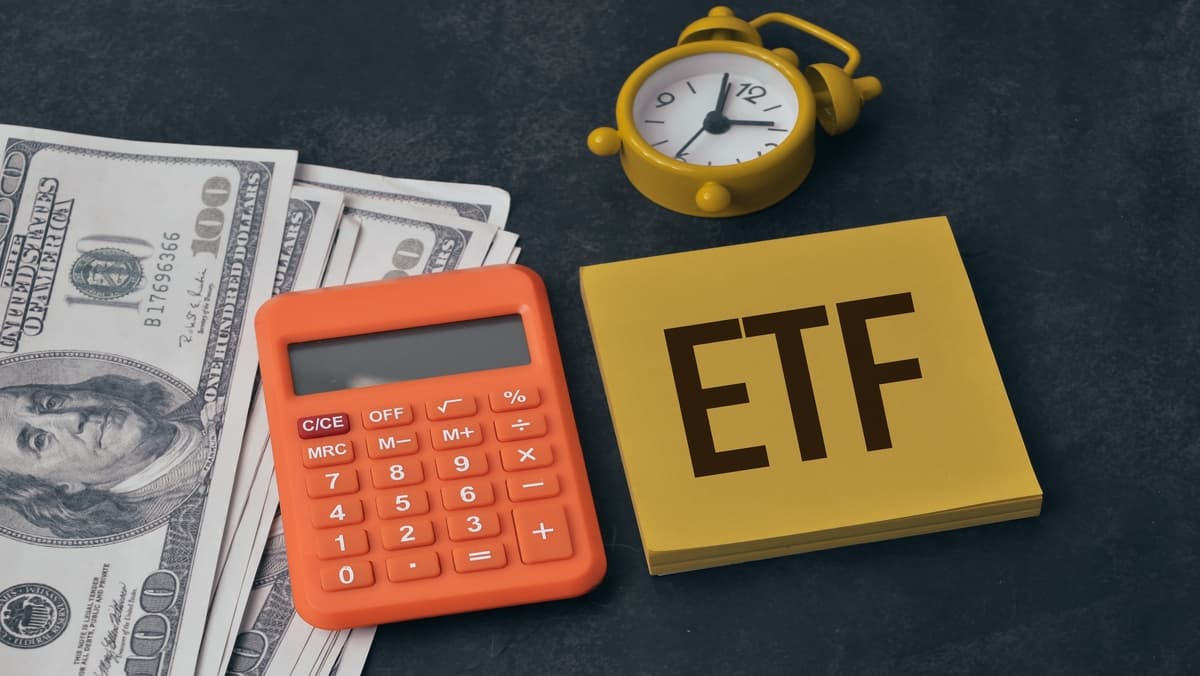星期二 Feb 11 2025 09:12

6 最小

Gold ETF hits record, as economic uncertainty continues and inflation concerns rise, gold has emerged as a safe-haven asset, leading to a surge in demand for gold ETFs.
Economic Uncertainty
In recent years, several factors have contributed to heightened economic uncertainty, including geopolitical tensions, supply chain disruptions, and fluctuating interest rates. These conditions often lead investors to seek refuge in gold, which is historically viewed as a stable store of value. As a result, gold ETFs have seen significant inflows, reaching record highs.
Inflation Concerns
Inflation has become a pressing concern for many economies, with central banks struggling to balance growth and price stability. As inflation erodes purchasing power, gold is often seen as a hedge against rising prices. The recent uptick in inflation rates has further fueled demand for gold, driving up the prices of gold ETFs.
Market Performance
The performance of gold has often been inversely correlated with stock market fluctuations. When equity markets are volatile or in decline, investors frequently pivot to gold to protect their portfolios. This shift has been evident in recent months as major stock indices have experienced turbulence, leading to increased interest in gold ETFs.
Overview
The SPDR Gold Shares ETF (GLD) is one of the largest and most recognized gold ETFs in the world. Launched in 2004, GLD seeks to reflect the performance of the price of gold bullion, less expenses. It holds physical gold bars stored in secure vaults, making it a popular choice for investors looking for direct exposure to gold prices.
Key Features
Liquidity: GLD boasts high trading volume, making it easy for investors to buy and sell shares without significant price impact.
Expense Ratio: With an expense ratio of 0.40%, GLD remains a competitive option among gold ETFs.
Physical Backing: Each share represents a fraction of an ounce of gold, ensuring that investors are directly tied to gold price movements.
Performance
GLD has performed well in recent years, particularly during periods of economic volatility. Its ability to track the price of gold accurately has made it a preferred choice for both institutional and retail investors. With continued economic uncertainty, GLD is likely to remain a key player in the gold ETF market.
Overview
The iShares Gold Trust (IAU) is another prominent gold ETF that aims to track the price of gold bullion. Launched in 2005, IAU also holds physical gold as its primary asset, providing investors with direct exposure to gold prices.
Key Features
Lower Expense Ratio: IAU has an expense ratio of 0.25%, making it one of the most cost-effective gold ETFs available.
Transparency: Each share is backed by physical gold, ensuring transparency in its holdings.
Tax Efficiency: IAU is structured to be more tax-efficient than some other gold ETFs, potentially benefiting investors in the long run.
Performance
IAU has gained popularity among investors seeking a low-cost option for gaining exposure to gold. Its strong performance during periods of market volatility has made it a reliable choice for portfolio diversification. As gold prices continue to rise, IAU is expected to attract more investors looking for a solid investment in precious metals.
Overview
The VanEck Vectors Gold Miners ETF (GDX) takes a different approach by focusing on gold mining companies rather than physical gold itself. Launched in 2006, GDX aims to track the performance of companies involved in gold mining, providing investors with exposure to the gold mining sector.
Key Features
Growth Potential: Investing in mining companies can offer growth potential, especially if gold prices rise significantly.
Diversification: GDX provides exposure to multiple companies in the gold mining industry, spreading risk across various stocks.
Higher Risk: While GDX may offer greater returns, it also comes with higher volatility compared to gold ETFs that hold physical gold.
Performance
GDX has performed well in a rising gold price environment, often outpacing physical gold ETFs during bullish market conditions. However, it is essential for investors to consider the inherent risks associated with investing in mining companies, as operational and geopolitical factors can significantly impact performance.
Overview
The Invesco DB Gold Fund (DGL) is designed to track the performance of gold futures contracts rather than holding physical gold. This ETF offers a unique approach to investing in gold by providing exposure to gold prices through futures, which can be beneficial in specific market conditions.
Key Features
Futures Exposure: DGL provides investors with exposure to gold prices through futures contracts, allowing for potential leverage in certain market environments.
Expense Ratio: With an expense ratio of 0.78%, DGL is slightly higher than some of its competitors, reflecting its unique investment strategy.
Higher Risk and Reward: Futures contracts can amplify gains but also increase risk, making DGL a more volatile investment option.
Performance
DGL can be a suitable choice for investors looking to capitalize on short-term price movements in gold. However, due to its reliance on futures contracts, it may not be ideal for long-term investors seeking stable exposure to gold. Those considering DGL should be aware of the added complexities and risks associated with futures trading.
As gold prices reach record highs and economic uncertainty looms, gold ETFs offer a compelling investment opportunity for those looking to diversify their portfolios. Whether seeking direct exposure to physical gold or considering the growth potential of mining companies, these four gold ETFs provide various options for investors.
Each ETF has its unique features, advantages, and risks, making it essential for investors to align their choices with their investment goals and risk tolerance. As the economic landscape continues to evolve, keeping a close eye on these gold ETFs will be crucial for those looking to navigate the precious metals market effectively.
When considering shares, indices, forex (foreign exchange) and commodities for trading and price predictions, remember that trading CFDs involves a significant degree of risk and could result in capital loss.
Past performance is not indicative of any future results. This information is provided for informative purposes only and should not be construed to be investment advice.